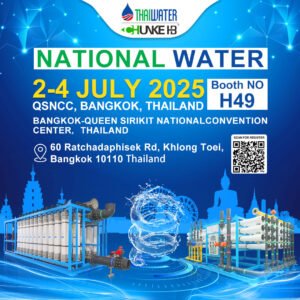Reverse Osmosis & Water Treatment in Thailand
CHUNKE projects of Reverse Osmosis Water Treatment in Thailand including different types of water treatment systems.
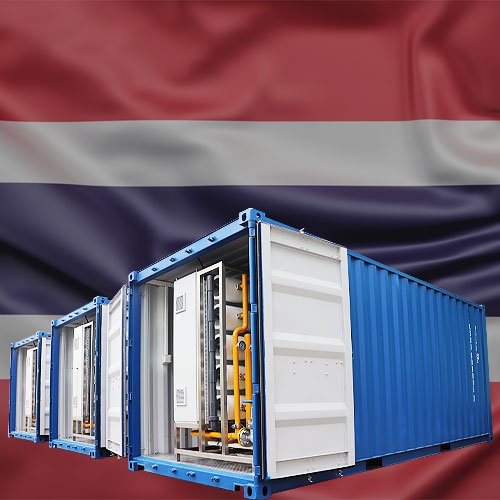
Thailand, officially the Kingdom of Thailand and historically known as Siam, is a country in Southeast Asia on the Indochinese Peninsula. With a population of almost 70 million, it spans 513,120 square kilometres (198,120 sq mi). Thailand is bordered to the north by Myanmar and Laos, to the east by Laos and Cambodia, to the south by the Gulf of Thailand and Malaysia, and to the west by the Andaman Sea; it also shares maritime borders with Vietnam to the southeast, and Indonesia and India to the southwest. Bangkok is the nation’s capital and largest city.
Total Renewable Water Resources per Capita in Thailand
In 2020, renewable water resources per capita for Thailand was 6,283.8 cubic meters per year. Renewable water resources per capita of Thailand fell gradually from 11,553.5 cubic meters per year in 1971 to 6,283.8 cubic meters per year in 2020.
- Renewable surface water: 427.4 billion cubic meters per year
- Renewable groundwater: 41.9 billion cubic meters per year
- Renewable water resources: 438.6 billion cubic meters per year
- Dependency ratio: 48.8 %
Thailand, a nation known for its vibrant culture and picturesque landscapes, also grapples with environmental issues like air and water pollution. Addressing these challenges, water treatment in Thailand has been a focal point, with strategies ranging from the implementation of reverse osmosis systems to seawater desalination. Hence, this article delves into the intricacies of water treatment in Thailand and the critical role of Reverse Osmosis (RO) systems.
Meanwhile, CHUNKE provides wide range of filtration and economical solutions based on the Thailand’s water resources. So, our water treatment in Thailand becomes more popular accordingly.
- Surface water is water from river, lake which can be treated using different methods, such as Ultrafiltration Systems, Brackish Water RO accordingly.
- Desalination can be used for water from ocean, or sea source, which can be treated using Sea Water Reverse Osmosis Systems; Desalination Systems
- Ground Water or brackish water is from water located in the pore space of soil and rock “Borehole well”, which can be treated using Reverse Osmosis Systems, Borehole Water Filtration Systems, Well Water Filtration Systems, Chemical Dosing, UV Water Sterilizer accordingly.
- Government water supply, which could have high level of hardness or high level of chlorine, can be treated with Water Softener System, Media Water Filters.
CHUNKE Projects of Water Treatment in Thailand
Meanwhile, CHUNKE designs and produces water treatment systems that meet the World Health Organization requirements. So, our water treatment in Thailand is suitable for drinking.
CHUNKE has over 15 years of experience as a global provider of B2B water treatment solutions for a variety of applications and industries. Hence, we offer a large selection of all types of reverse osmosis, ultrafiltration, electrodeionization. And also, water treatment systems to meet your industrial needs accordingly. So, CHUNKE’s extensive global experience in engineering and manufacturing allows us to pre-engineer and customize water treatment and reverse osmosis systems to meet a wide range of customer requirements and specifications.
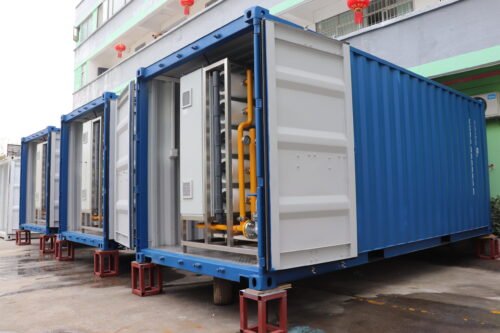
10TPH Containerized SWRO System for Hotel

250LPH Double Pass RO + EDI for Cosmetic Production
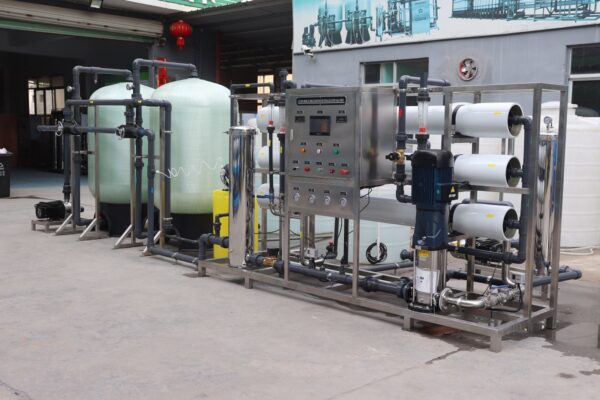
6000LPH Reverse Osmosis System for Drinking
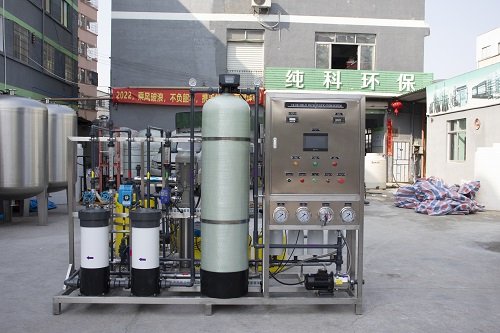
500LPH RO Sea Water Desalination for Irrigation
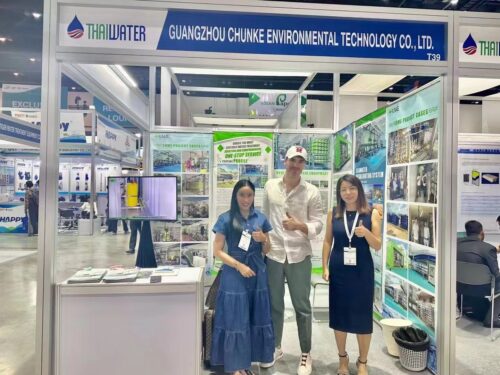
ThaiWater Exhibition 2023
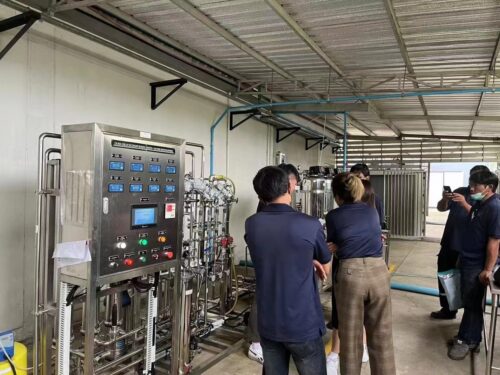
RO System for Cosmetic Production in Thailand

Containerized Sea Water SWRO Plant in 5 Stars Hotel
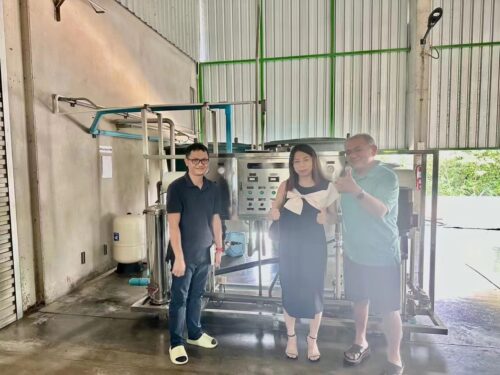
3000LPH Drinking Water RO System in Thailand
Thailand's Environmental Challenges and Water Resources
Thailand struggles with several environmental issues, including air pollution from vehicle emissions, water pollution from organic and factory wastes, deforestation, soil erosion, and wildlife populations threatened by illegal hunting, accordingly.
Water resources in Thailand are extensive, with renewable water resources measuring 409.9 cu km as of 1999. So, the freshwater withdrawal is divided into 2% domestic, 2% industrial, and 95% agricultural. Despite these figures, Thailand faces water shortages, like many other countries, with large urban areas like Bangkok being more susceptible, accordingly.
The Role of Dams in Water Management
Dams play a crucial role in managing water resources in Thailand. The country’s dam capacity is estimated at 85 km3, which accounts for about 43 percent of the annual runoff. So, the dams fall under four categories:
- Large dams with a hydropower component
- Large dams without a hydropower component, primarily for irrigation
- Small dams for irrigation, livestock, and domestic purposes
- Small dams used for agricultural and domestic purposes
Despite their benefits, the dams have also been associated with several issues such as overdesigning compared to the annual recharge obtainable.
The State of Wastewater Treatment in Thailand
Wastewater treatment in Thailand is not commonplace. Hence, industrial wastewater is often discharged into rivers and canals, causing significant pollution. However, several wastewater treatment projects are being developed, primarily in the Bangkok metropolitan area.
The Emergence of Reverse Osmosis Systems in Thailand
One of the strategies employed to address water treatment in Thailand is the use of Reverse Osmosis (RO) systems. So, an RO system is a device that removes dissolved solids from water using a filtration membrane. Meanwhile, it works by pushing water through the system using a pump, with a permeate pump reducing wastewater from the system.
Reverse Osmosis Plant RO System
How does Reverse Osmosis Work?
Reverse Osmosis is a process that purifies water by forcing it through a semi-permeable membrane. It removes particles, organics, bacteria, and salts, thus making it an effective method for treating surface water, accordingly. So, the membranes used in this process are designed to withstand high pressures, and the system’s capacity depends on the total dissolved solids in the feed water.
The Benefits of Reverse Osmosis Systems
Reverse Osmosis systems offer several benefits. First, they are reliable, efficient, and can last for 10 to 15 years with proper care. The systems can remove not only dissolved solids but also bacteria and many other contaminants. Additionally, the use of a permeate pump can reduce the wastewater by 75 to 80%, saving money and improving the environment.
The Role of Permeate Pumps in Reverse Osmosis Systems
Permeate pumps increase the efficiency of reverse osmosis systems. An RO system equipped with a permeate pump can reduce the wastewater produced by up to 80%, prolong the system’s life, and boost the quality of the clean water produced.
Seawater Desalination in Thailand
Seawater desalination is another method employed in water treatment in Thailand. So, this process uses a reverse osmosis membrane to separate dissolved substances from seawater and purify wastewater before it is released into the environment.
The global reverse osmosis membrane market’s expected growth over the forecast period, coupled with the increasing demand for clean drinking water, is anticipated to drive the Thailand market of Reverse Osmosis Systems, accordingly.
Industries and Applications
The RO technology has numerous applications across various sectors, including:
- Drinking water production
- Boiler feed water pre-treatment
- Food and beverage processing
- Seawater desalination
- Municipal water supply
- Pharmaceuticals
- Bio-technology
- Hotels and resorts
- Medical and healthcare
The Bottom Line
While RO systems are commonly associated with water treatment, they can be used in various industrial applications that require the removal of specific inorganic ions or pesticides. So, other industrial uses for RO systems include metal finishing and semiconductor manufacturing.
In conclusion, water treatment in Thailand plays a critical role in managing the country’s environmental challenges. The implementation of systems like the RO plants and seawater desalination plants offer sustainable solutions, ensuring the supply of clean and safe water for the population.
As Thailand grapples with increasing water scarcity issues due to climate change and population growth, the need for sustainable and reliable sources of freshwater has never been more pressing. Hence, Seawater Reverse Osmosis (SWRO) desalination emerges as a promising solution to secure a stable water supply for the country’s future. In this article, we will delve into the benefits of SWRO desalination for seawater in Thailand and how it can address the nation’s water challenges.
Understanding SWRO Desalination:
SWRO desalination is a cutting-edge technology that extracts freshwater from seawater by using a process known as reverse osmosis. It involves pushing seawater through a specialized membrane that removes salt and impurities, resulting in high-quality drinking water. This method has gained popularity worldwide for its efficiency, sustainability, and minimal environmental impact.
Benefits of SWRO Desalination for Seawater in Thailand:
Drought Resilience:
Thailand is susceptible to droughts, particularly in the dry season. So, SWRO desalination provides a reliable water source unaffected by climate variations, ensuring a stable water supply year-round.
Reduction in Water Stress:
With a growing population and expanding industrial sectors, the demand for water in Thailand is on the rise. So, SWRO can alleviate water stress by producing significant quantities of freshwater, supporting both domestic and industrial needs.
Environmental Friendliness:
Compared to traditional desalination methods, SWRO is more environmentally friendly, accordingly. Meanwhile, it consumes less energy and minimizes harm to marine ecosystems, making it a sustainable choice for Thailand’s coastal regions.
Water Quality:
SWRO desalination produces high-quality drinking water that meets international standards. So, this ensures that the water supply is safe and suitable for consumption, promoting public health.
Cost-Effective:
Over time, SWRO desalination becomes cost-effective as technology advances and economies of scale are achieved. So, it offers a long-term solution that can reduce the economic burden of water scarcity in the country.
Resource Management:
SWRO can help in efficient management of water resources by reducing reliance on overexploited freshwater sources. So, this contributes to the preservation of critical natural habitats and ecosystems.
Tourism and Agriculture:
The availability of freshwater from SWRO desalination can benefit the tourism and agricultural sectors, promoting economic growth and stability in coastal regions.
Challenges and Considerations:
While SWRO desalination holds great promise for Thailand, it is essential to consider its potential challenges, including energy consumption, brine disposal, and infrastructure costs. Thorough planning and investment are required to overcome these hurdles and ensure the successful implementation of SWRO projects.
SWRO desalination for seawater in Thailand represents a transformative solution to the country’s water scarcity issues. By harnessing the power of advanced technology, Thailand can secure its water future, support economic growth, and promote environmental sustainability, accordingly. As the nation faces increasing water challenges, SWRO desalination stands as a beacon of hope for a more resilient and water-secure Thailand.
Chunke Water Treatment‘s expertise in producing high-quality reverse osmosis systems has contributed to improving water treatment capabilities in Thailand. So, their reliable and efficient RO plants have been implemented in various projects across the country, ensuring access to clean and safe drinking water.

